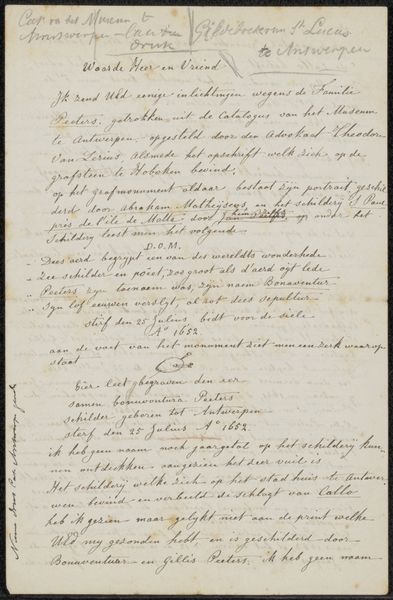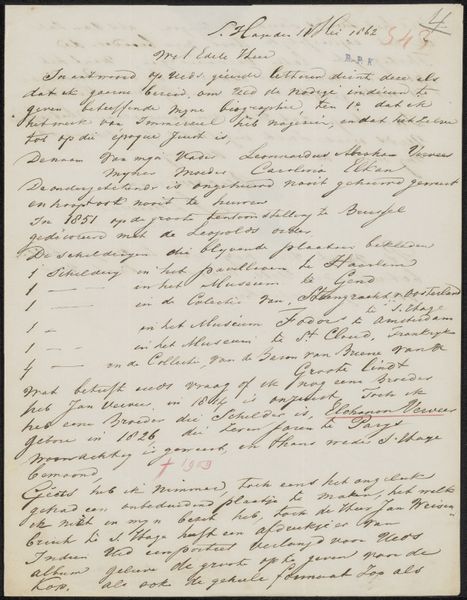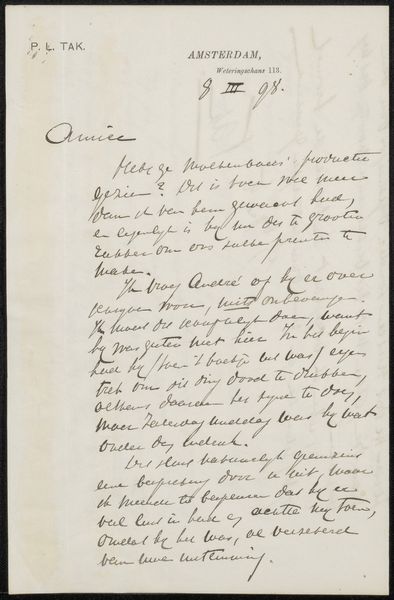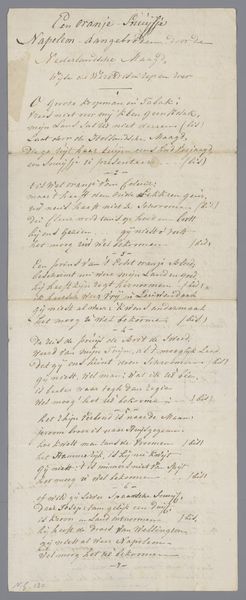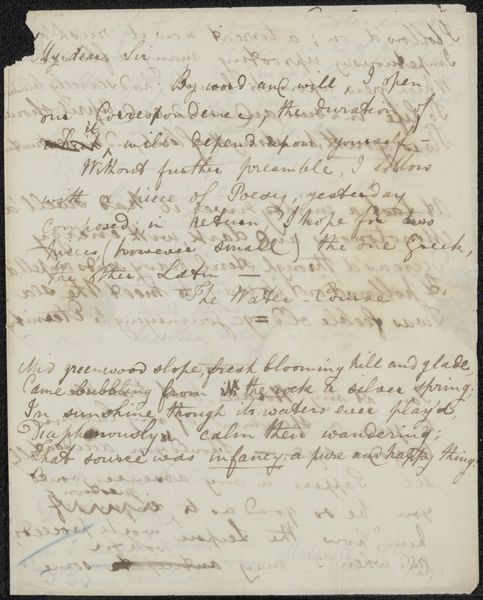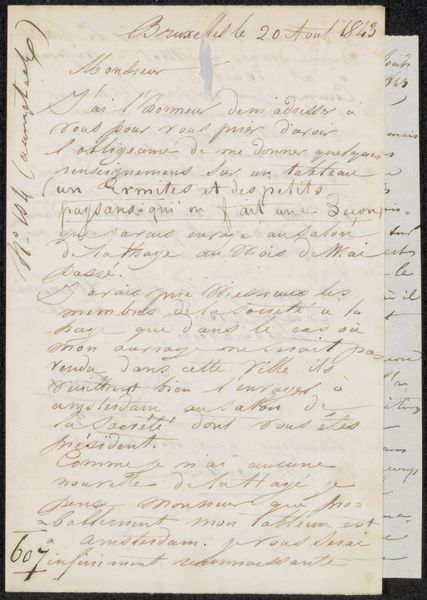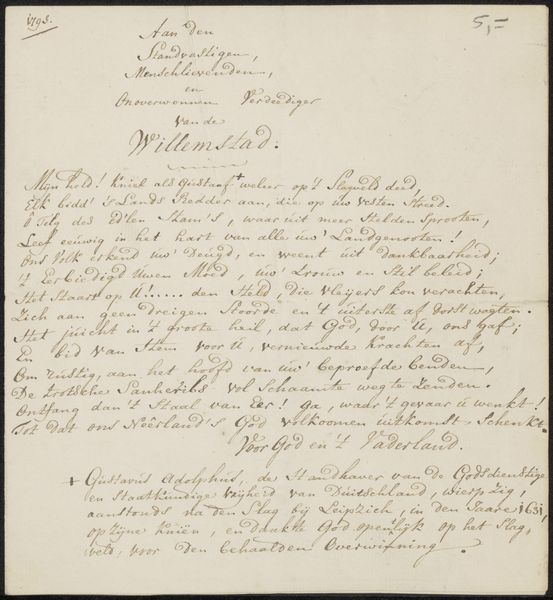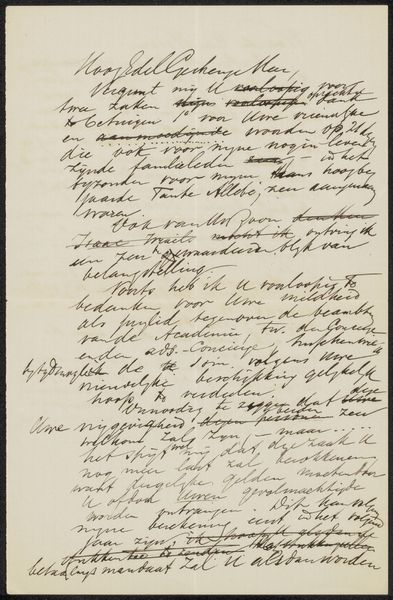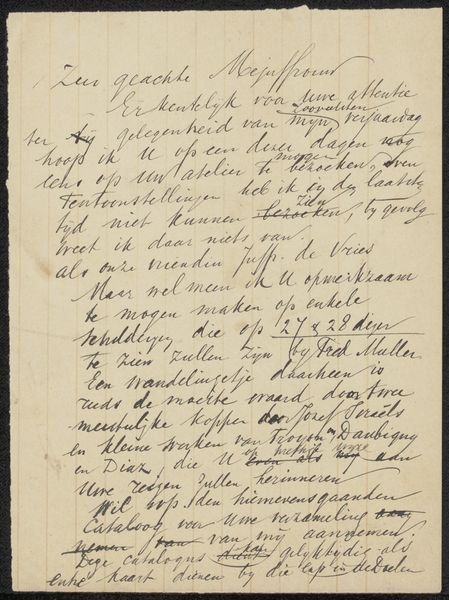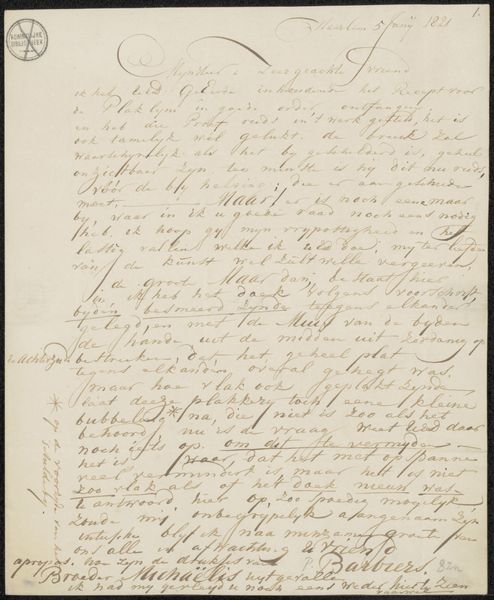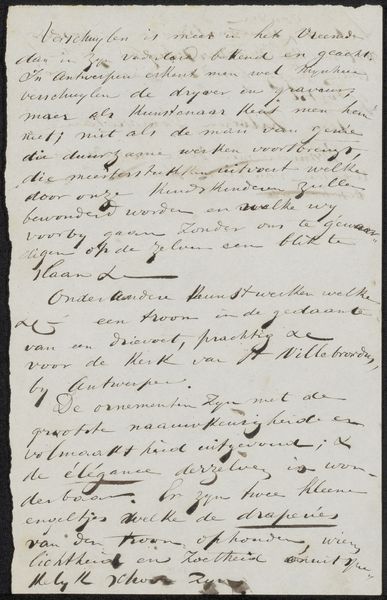
drawing, textile, paper, ink
#
drawing
#
narrative-art
#
textile
#
paper
#
ink
#
romanticism
Copyright: Rijks Museum: Open Domain
Editor: Here we have "Gedicht over de Slag bij Waterloo," a poem about the Battle of Waterloo, dating back to 1824. It's rendered in ink on paper, almost like a textile because it feels densely woven with words. It's at the Rijksmuseum. The handwriting, although difficult for me to read, creates an imposing effect. How does its context and the romantic period tie in with the writing of the poem? Curator: That's a great observation! You’ve already identified some key elements. Given its presence in the Rijksmuseum, a Dutch national museum, it's vital to consider the poem’s public role. Waterloo, while a victory against Napoleon, also reshaped European power dynamics. How might a Dutch audience in 1824 have perceived this “victory”, especially memorialized in verse? Is this a celebration, a lament, or something more nuanced, reflecting perhaps a complex relationship with the restored monarchy and the broader European order? Editor: I hadn’t thought about the Dutch perspective so pointedly. It makes sense that national identity plays a role. Was there a specific type of person who would typically write such a poem, who had the power and means to express his views this way? Curator: Poems such as this one, circulating at the time, helped construct public opinion. While authorship may be obscured (here, it's listed as Anonymous), consider the patronage system – who commissions, disseminates, and preserves such works? Often it’s connected to emerging institutions, state apparatus and a growing sense of nationalism that wants to commemorate historical events and construct cultural memories. It’s crucial to unpack the power dynamics embedded within seemingly simple celebratory verses. Editor: So, even a handwritten poem is involved in shaping the cultural memory of a major political event. Curator: Precisely. It urges us to analyze beyond face value, examining its role within a network of political and cultural forces. Editor: I learned a lot looking beyond face value at cultural implications. Thank you. Curator: A worthwhile exploration, indeed.
Comments
No comments
Be the first to comment and join the conversation on the ultimate creative platform.
